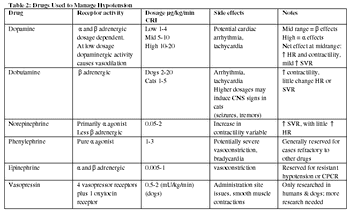Bea Biddinger, LVT, VTS (ECC)
Articles by Bea Biddinger, LVT, VTS (ECC)

Basic lung function is designed to exchange oxygen and carbon dioxide. In order to transfer oxygen from atmospheric air to the blood stream three functions must be in place: ventilation, diffusion, and perfusion. Ventilation is the process of air moving into and out of the lungs.

Unlike the popular home and garden channel TV shows that boast remodeling of room or house structures, remodeling of fluid compartments within the critical care patient is not the effect a clinician desires. Unfortunately, many of our critical patients have trauma or disease processes that result in an imbalance between fluid compartments.

Pleural space disease is a common cause of respiratory distress in emergent and critical patients. Air, fluid, exudates, chyle, blood, and herniated abdominal organs may be present in the thoracic cavity.

For a technician, the daily assessment of their critical care patients often begins with rounds. After receiving a brief verbal history and synopsis of presentation, diagnostics, and treatments a tech is ready to take over the care of that patient. Of primary importance is an initial hands on assessment.

Sustained hypotension is a life threatening situation where the body's major organs (kidney, liver, brain, and heart) can experience irreversible damage from inadequate perfusion pressure. Veterinary technicians may encounter hypotension frequently when caring for emergency and critical care patients, as well as anesthetized or post operative patients who are frequently at risk of systemic hypotension.

Fentanyl is a schedule II narcotic approximately 100 times more potent than morphine.

Central line placement has become practical, affordable, and more often indicated in veterinary practice.

Oxygen therapy is indicated in the presence of hypoxemia (inadequate oxygenation of tissues within the body).

Within the body, the cardiovascular system is responsible for maintaining normal arterial blood pressure, normal blood flow to the tissues, and normal venous and capillary pressures.

Recently there has been a list generated that discusses monitoring 20 items to assess critical patients each day.

This discussion will focus on blood components commonly available and how to choose the appropriate blood component for the patient.



